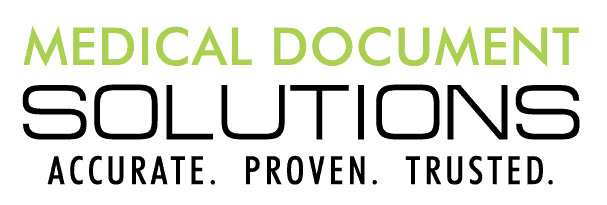In the healthcare sector, ensuring timely patient access to care is a pivotal measure of organizational success. Delays in patient appointments can tarnish a healthcare organization’s reputation, diminish patient satisfaction, and adversely affect clinical outcomes. As healthcare providers strive to balance the increasing demand for services with the delivery of exceptional care, the efficiency of documentation processes emerges as a critical factor. This blog explores the challenges of documentation management and how MDabstract’s specialized services can significantly enhance clinical throughput and patient access.
The Documentation Dilemma:
The burden of managing patient documentation, from chart preparation to EHR inbox triaging, significantly impacts clinicians’ ability to focus on patient care. The time spent navigating and updating electronic health records (EHRs) detracts from patient interaction, contributing to provider burnout and limiting the number of patients seen. Moreover, inconsistencies and inaccuracies in documentation can lead to downstream billing and authorization challenges, further complicating the care delivery process.
Maximizing Clinical Throughput with MDabstract:
MDabstract addresses these challenges by providing remote documentation care teams that specialize in optimizing the documentation workflow. Our goal is to ensure healthcare providers can dedicate their time and expertise to direct patient care by alleviating the administrative burdens associated with documentation. Here’s how our services make a difference:
Pre-visit Chart Preparation: By ensuring charts are prepped and ready before patient visits, providers have immediate access to accurate, standardized, and actionable data. This preparation facilitates a smoother care delivery process, enhancing the patient encounter experience.
EHR Inbox Triage: Our teams triage EHR inboxes to filter out documentation that does not require clinician review. This focused approach ensures that providers only spend time on documentation that necessitates their expertise, further streamlining the care process.
Standardization and Consistency: By maintaining data consistency and standardization, we support seamless downstream billing and authorization processes. This reduces the need for after-visit rework, allowing providers to allocate more time to patient care.
Cognitive Load Reduction: Shifting the documentation burden to MDabstract’s care teams can save providers 2-3 minutes per visit. This time savings, though seemingly small, compounds throughout the day, reducing cognitive burden and allowing for additional patient visits. The result is a significant increase in clinical throughput, patient satisfaction, and provider well-being.
The Impact of Efficient Documentation on Patient Access:
MDabstract’s remote documentation services are not just about easing the documentation load; they’re about transforming the way care is delivered. By enabling providers to see more patients without sacrificing the quality of care, our services play a crucial role in improving patient access. This enhancement in access is critical for healthcare organizations aiming to meet the growing demand for services, improve clinical outcomes, and elevate their standing in a competitive healthcare landscape.
The challenges of documentation management in healthcare are manifold, but the solutions provided by MDabstract offer a clear path to improvement. By partnering with us, healthcare organizations can unlock the potential for increased patient access, improved provider satisfaction, and enhanced clinical care. Our remote documentation care teams are committed to ensuring that healthcare providers have the quality data they need, exactly when they need it, allowing them to focus on what matters most: the patient.
If your organization is grappling with patient access challenges and looking for ways to increase visits and revenue while reducing the provider documentation burden, it’s time to consider how MDabstract can help. Schedule a call with us to explore how our services can transform your clinical documentation processes and pave the way for a more efficient, patient-centered care delivery model.




